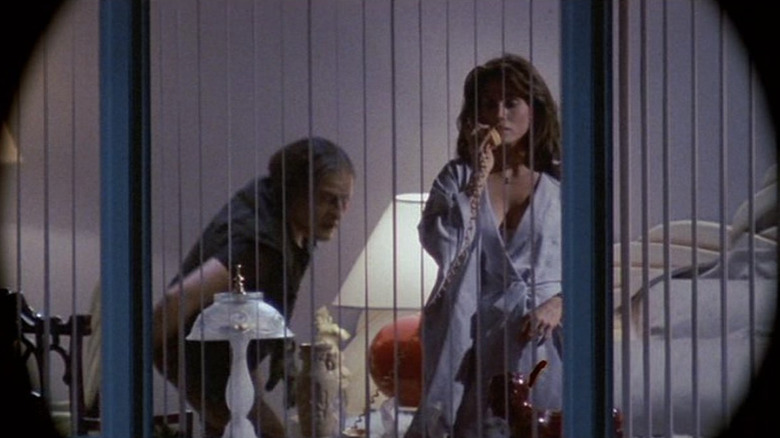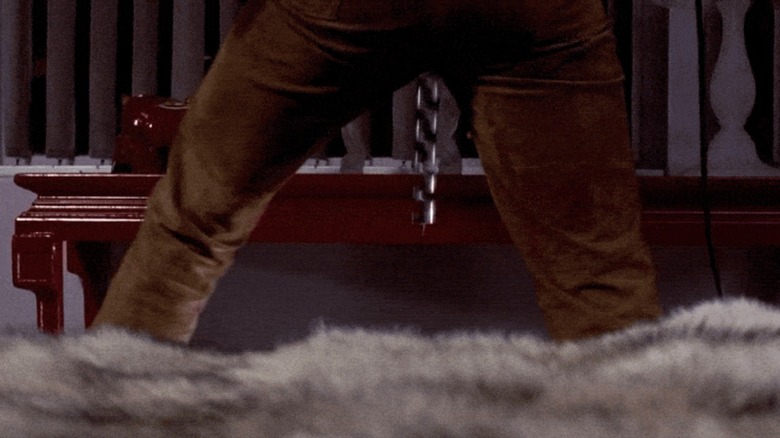Brian De Palma Chose A Drill For Body Double's Murder Weapon For A Very Practical Reason
The 1984 slasher "Body Double" is one of director Brian De Palma's most blatant Hitchcock homages. If "Obsession" is "Vertigo" and "Dressed to Kill" is "Psycho," then "Body Double" is "Rear Window," as both are murder mysteries sparked by voyeurism. Struggling actor Jake Scully (Craig Wasson) is house-sitting for an acquaintance and spends his nights spying on his new neighbor Gloria (Deborah Shelton) via telescope. After a brief tryst, Jake witnesses her murder and sets about unraveling the foul play.
A key difference is how the murders unfold. In "Rear Window," Jeff (James Stewart) has been observing his neighbors while he heals from a broken leg. He falls asleep by the window one night and hears a scream. He then notices Lars Thorwald (Raymond Burr) leaving his apartment throughout the night and, over the next day, realizes Thorwald's wife Anna (Irene Winston) is missing. Part of the murder mystery is asking if there's been a murder at all.
In "Body Double," though, the audience witnesses the murder, and Jake is never uncertain it's taken place. In some ways, this means "Body Double" is a more conventional murder mystery, but what isn't conventional is the murder weapon. The disguised assailant first tries to garrote Gloria with a phone chord (homaging another Hitchcock flick, "Dial M For Murder"), but when that fails, he butchers her with a power drill the size of a minigun.
Choosing the murder weapon
In a contemporary interview with People Magazine, De Palma discussed how and why he chose a drill as a murder weapon:
"I do a lot of murder mysteries, and after a while you get tired of the usual instruments. You can use a knife, a rope, but now we have electrical instruments, which are truly terrifying."
De Palma also noted there was an in-story reason for the over-the-top kill. It turns out the killer, who is wearing a disguise, wanted Jake to spot him. This means Jake would pass on his masked appearance to the police, who would in turn chase a person who doesn't exist. A noisy power drill would definitely capture the attention of the neighbors.
In "Rear Window," we don't see the murder weapon being used, but it's suggested to be a knife. That's the same weapon wielded by Norman Bates in Hitchcock's most famous murder, the shower scene in "Psycho." De Palma's "Dressed to Kill" featured another knife-wielding killer, as did less mysterious slashers of the era like "Halloween."
A drill also has the same phallic symbolism as a mere knife, so "Body Double" doesn't lose any sexual element of its horror. De Palma says it, "wasn't [his] intent" to suggest this with the drill, though he acknowledged why people would think that. Whether due to his own austerity or the censorious Hays Code, Hitchcock tended to merely suggest violence. De Palma revels in it.

